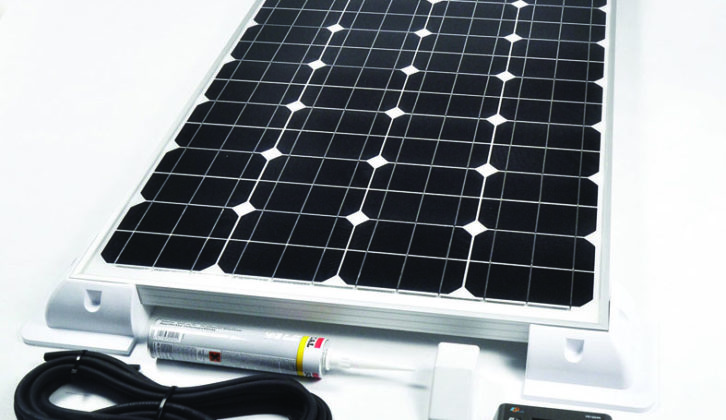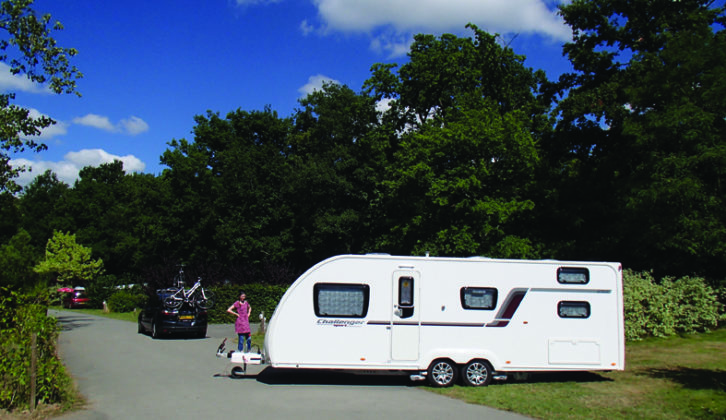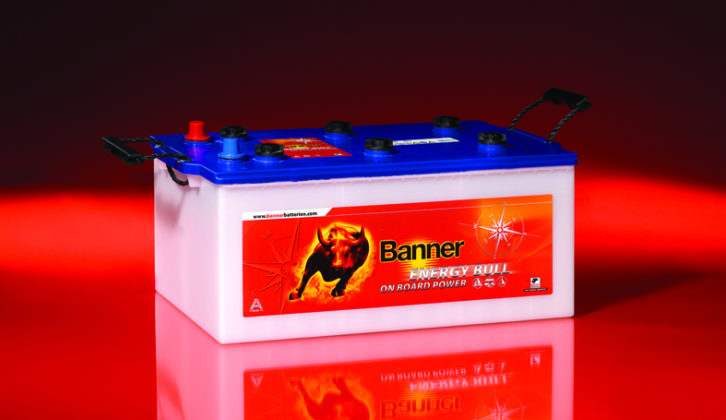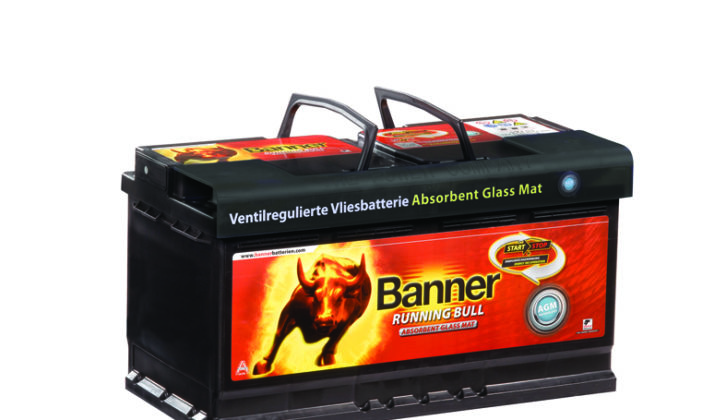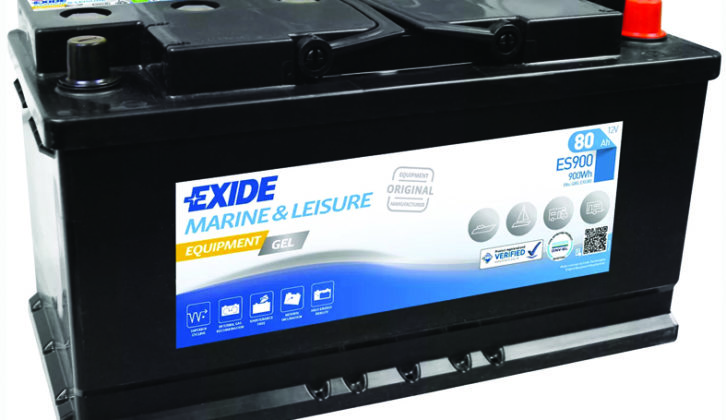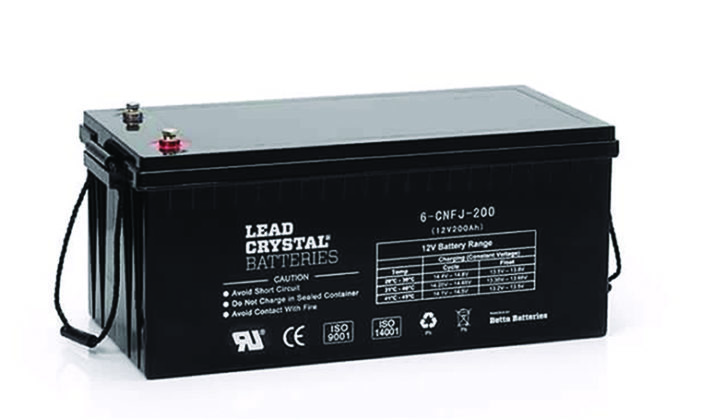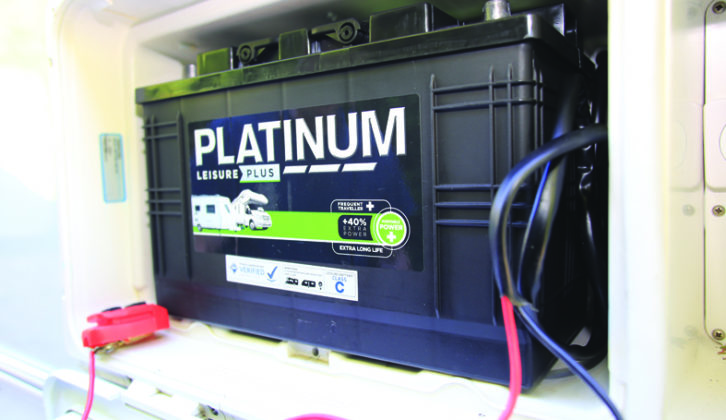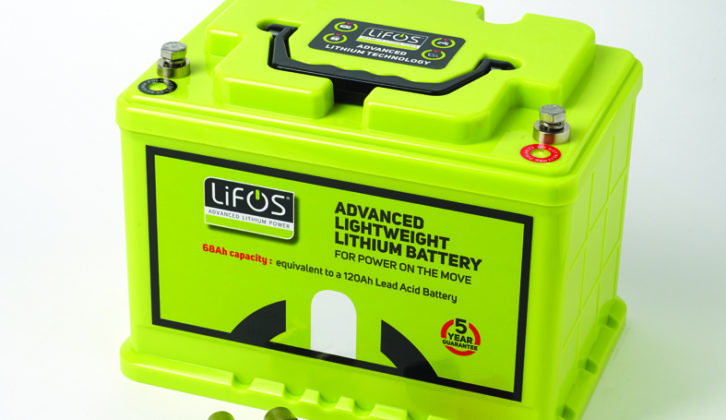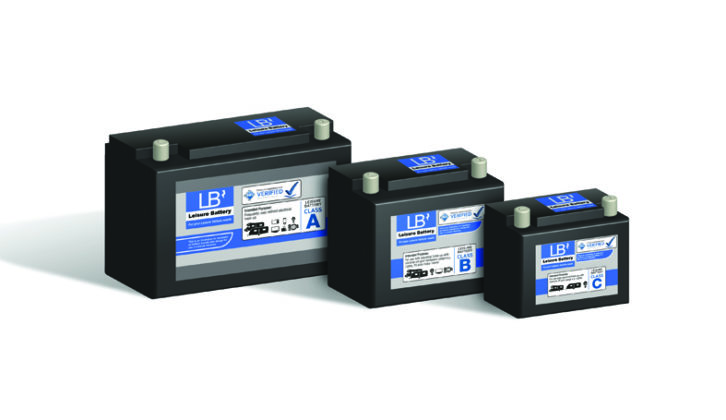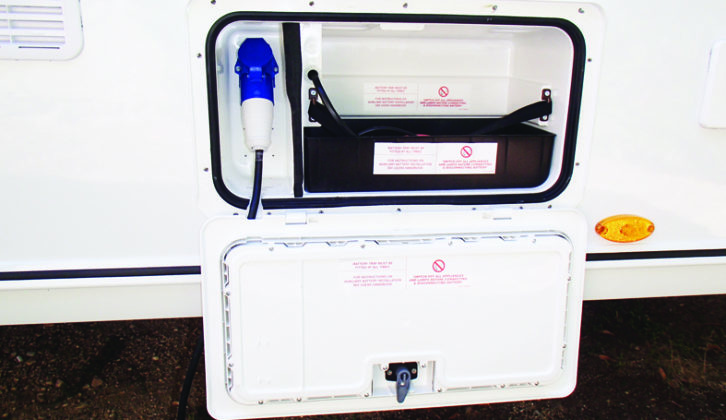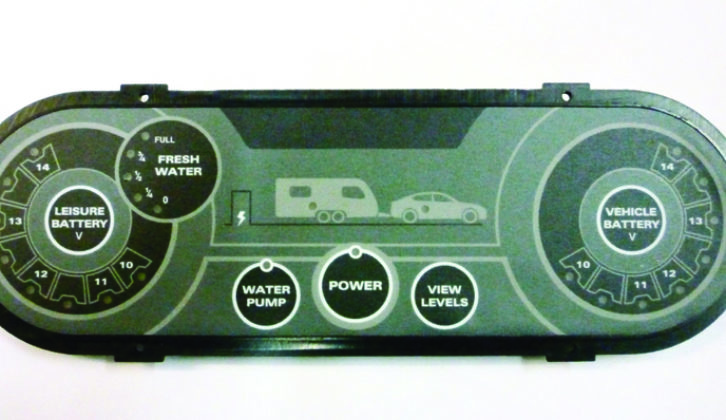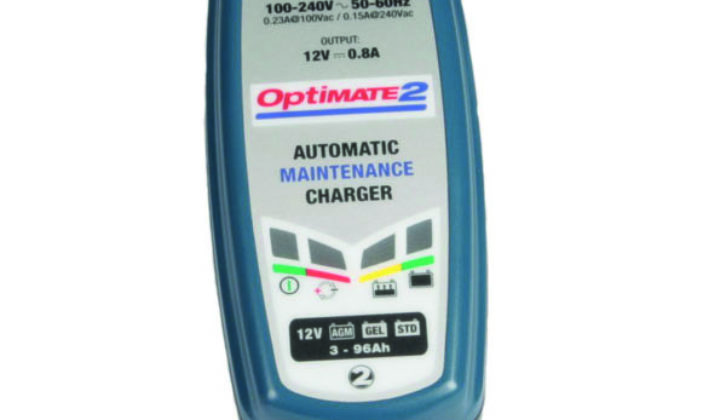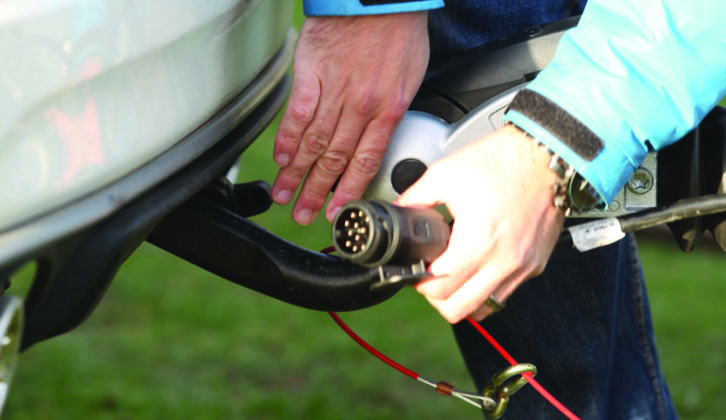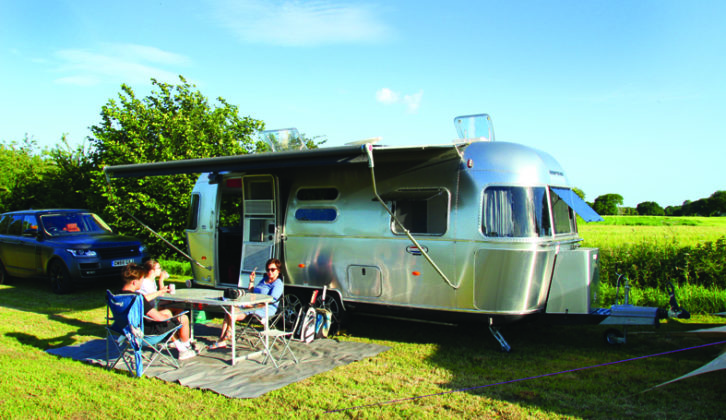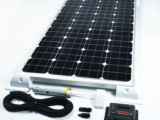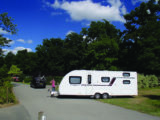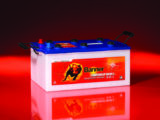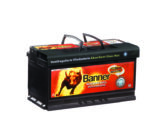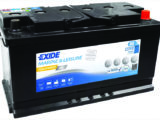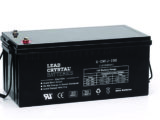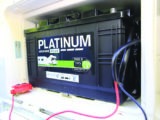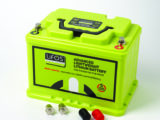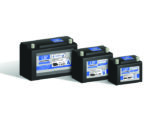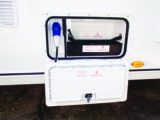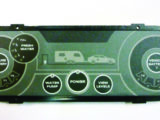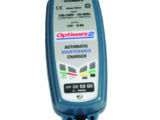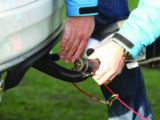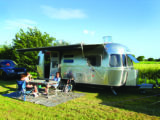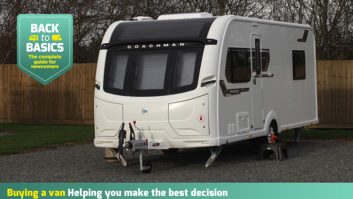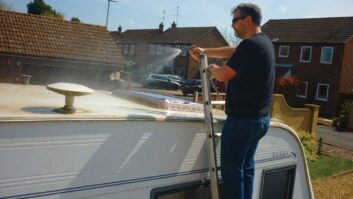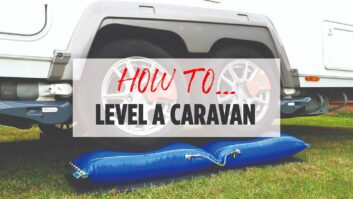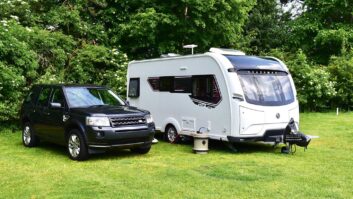Caravan leisure batteries, it has to be said, have served us extremely well: cheap, compact, reliable and long-lasting, it has illuminated our lighting and powered our (12V) TV’s for many years. It’s a little bundle of highly corrosive joy!
Of course, leisure batteries are different to car batteries, as they don’t have to deliver that powerful ‘mule kick’ to turn a starter motor, instead they flow smooth, consistent power over a long period, and can be steadily recharged using a solar panel or smart charger, or by a few miles hooked up to the back of your tow car.
In this guide, we’re looking at leisure battery choice and maintenance, to help you get the best ‘bang for your buck’.
What batteries do
Put simply, the leisure battery in your caravan stores 12V DC electricity, which can be used to power all sorts of devices, fittings and appliances.
Once charged up, it can provide electric current for many hours, depending on the ‘draw’ of those devices.
In addition, leisure batteries can also store electricity that is created by solar panels, and they have a third benefit, in that they smooth out the surges and spikes resulting from an inconsistent power flow – thereby protecting delicate electronics.
A typical leisure battery contains flat lead plates that are immersed in an acid electrolyte in one of a number of forms. The acid and lead react together to create the electric charge.
Choosing a battery
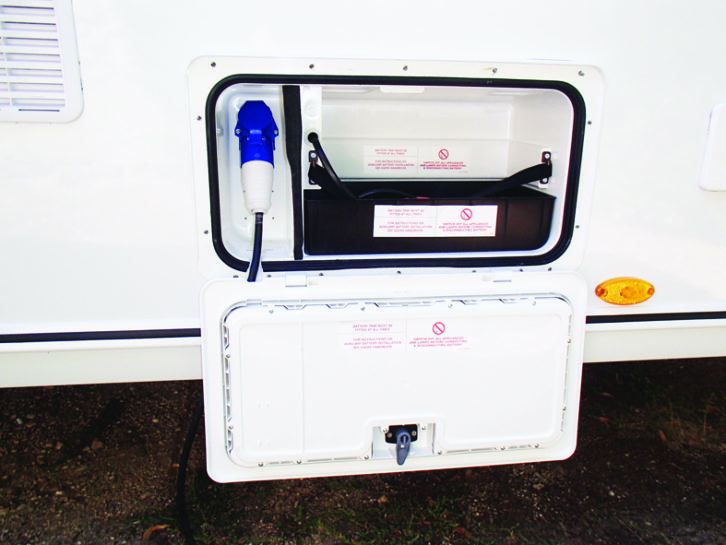
The first step is to decide which battery is appropriate for your needs. For example, if you use a motor mover or auto-leveller, you’ll need a 100Ah+ battery.
Leisure battery power ratings are measured in ampere-hours (Ah). This means, for example, that a 100Ah battery will deliver 1A for 100 hours, or 5A for 20 hours – or at least, they will do so in theory!
But the truth is, as a flooded lead-acid battery should only be discharged to a maximum 50% to avoid damage, you only have half this power available. Other battery types, discussed below, push this to 60%. Bear in mind, too, that Ah figures are calculated at 25°C, so at 0°C you can knock off about 20%.
Typical caravan leisure batteries range from around 60Ah to 110Ah. The bigger the number, the more power they deliver, but also the larger, heavier and costlier they are. As with all things, caravanning life is a compromise.
Choose a battery that will fulfil all of your requirements. If you like the latest gadgets – motor movers, levellers and so on – you’ll need a powerful battery of over 100Ah. Those are very large, so you’ll also need to consider if one will fit into your battery compartment, and whether the extra kilos – when added to the weight of the device you’re powering – eat up too much payload.
It’s really important to check these things before committing to having a device fitted. I was once photographing a motor mover being installed, only for the owner to discover the recommended 110Ah battery wasn’t even close to fitting inside his battery box.
He ended up lodging it under the settee, which is dangerous in so many ways, and would be illegal in a new caravan.
These days, there’s a wide choice of leisure batteries, and the prices vary quite drastically, although, as always, you get what you pay for.
Flooded lead-acid
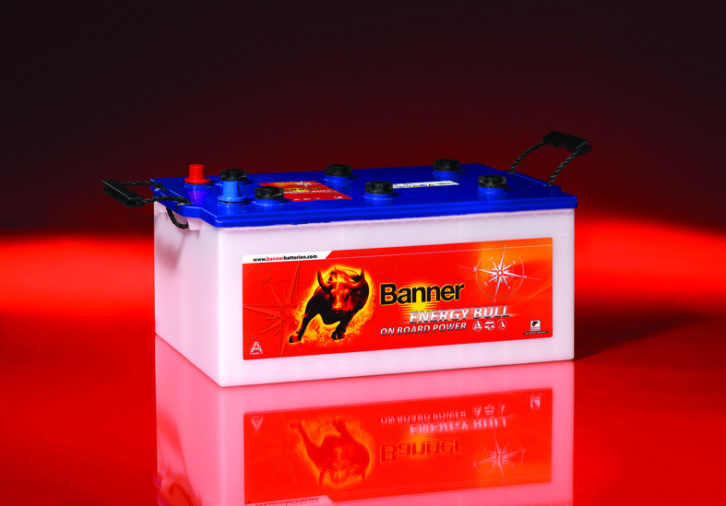
The most popular type of leisure battery is the flooded lead-acid, or FLA.
These simple batteries get their name from the lead plates that are submerged in sulphuric acid inside the casing. The acid acts as the electrolyte, creating the electric charge.
Some of these batteries have removable plugs, which allow you to top up the battery with ionised water (never tap water or sulphuric acid), ensuring the plates are kept covered. You should do this at least annually.
Failure to do so can cause the battery to overheat. In extreme cases, they can become very hot and swollen, which is highly dangerous. If this happens, disconnect the charger and let the battery cool down.
Chances are, it is already damaged beyond repair, but this will be confirmed if, when topped up with ionised water, the voltage is below 11.9V.
Many modern FLA batteries are sealed, in which case, maintenance is not an option. All flooded batteries are at risk of leakage if they are tipped or tilted, and even sealed batteries have vents that can leak. Extreme care should be taken when removing or transporting these batteries.
Absorbed glass mat
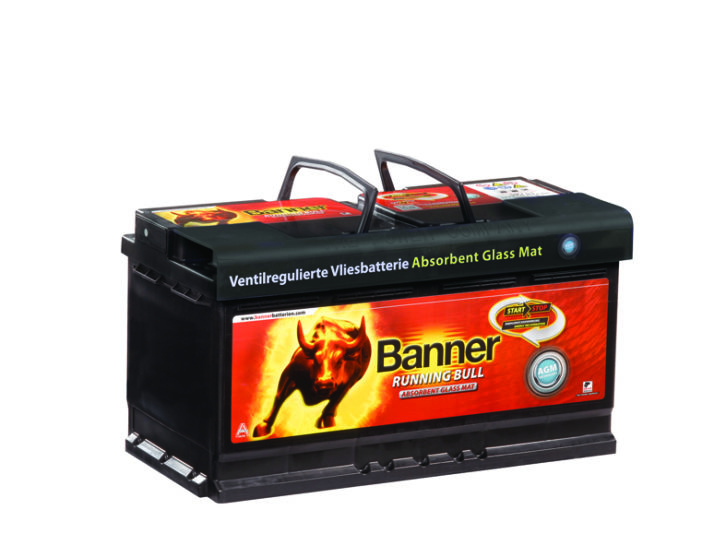
Absorbed glass mat or AGM batteries contain glass fibre mats that are impregnated with acid electrolyte and sandwiched between the lead plates.
AGM batteries cost more than the basic ones, but they last longer – charge-for-charge, they can be as cost-effective as a basic battery.
Gel
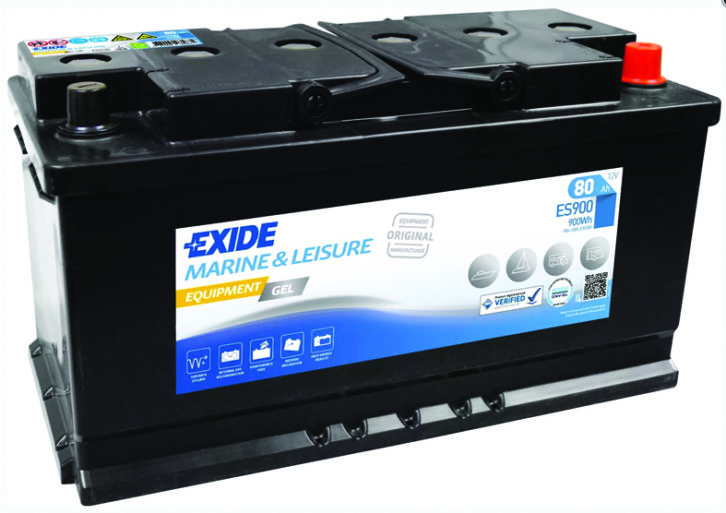
Inside a gel battery, there’s a silica gel, which ‘solidifies’ the acid electrolyte, preventing any risk of spillage.
They are pricier than a basic battery, and caravaners don’t really need to pay the extra cost of a gel battery, because they are designed for vehicles with more ‘dynamic lifestyles’, such as motorcycles and jet-skis.
Gel batteries also deliver less power for their size than standard batteries, but they can be deep-cycled (regularly deeply discharged, using most of their capacity) and they have an excellent lifespan. Care should be taken not to exceed the maximum charging voltage, because gel batteries are easily damaged by overcharging.
Lead-crystal
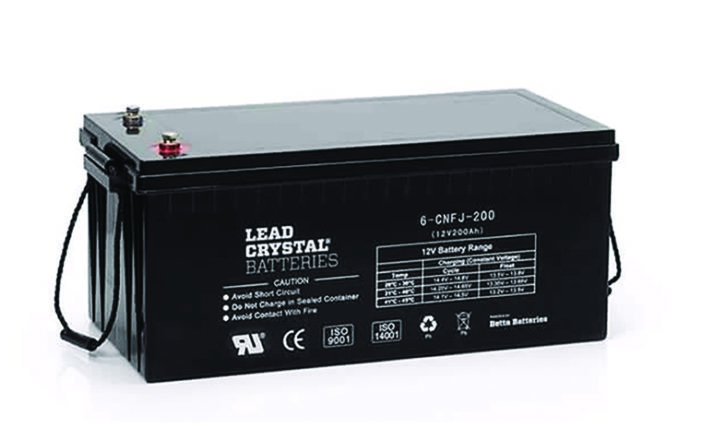
The electrolyte in lead-crystal batteries consists of a crystallised acid, sandwiched between the lead plates.
This non-leak technology is relatively new and costly, but does have the benefit of allowing very deep discharge, with no adverse effect on the cell. These batteries can also be recharged twice as quickly as a lead acid battery, and have a much longer life, off-setting the high purchase price.
Lithium-ion
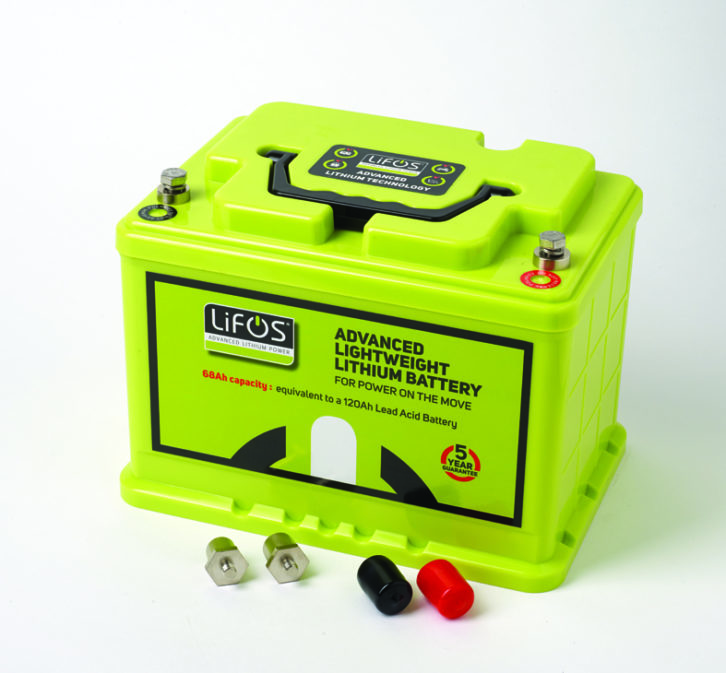
Whether you’re talking cars, phones or computer power, lithium seems to be the future.
It’s been a leisure battery option for a few years now. Originally, you’d have been paying around £2000 for a lithium-ion battery, but the prices have dropped in recent years, to as little as a quarter of that.
Lithium-ion’s big bonus is found in its light weight (less than haft that of a lead-acid battery) and compact size.
These batteries are also capable of 80% discharges before they need a recharge (think in terms of 50% for a lead-acid battery). In addition, lithium-ion batteries suffer only a small drop in voltage while their charge dissipates.
The final win? They recharge rapidly, too. Suddenly that price tag seems more reasonable.
Leisure versus starter batteries
In essence, leisure and starter batteries function in a similar way, creating electricity via a chemical reaction between lead plates and sulphuric acid.
However, the plates in car batteries are thinner and more numerous, to deliver enough cold-braking amps (CCA) to start the engine. True leisure batteries have fewer, thicker lead plates, which are coated differently, to give a longer, smoother flow of power.
In fact, tests have shown many ‘leisure battery’ makers simply rebadge car batteries, and externally, there’s almost no way to tell. However, if you see any mention of ‘CCA’ on the labelling, you’re most likely looking at a car battery.
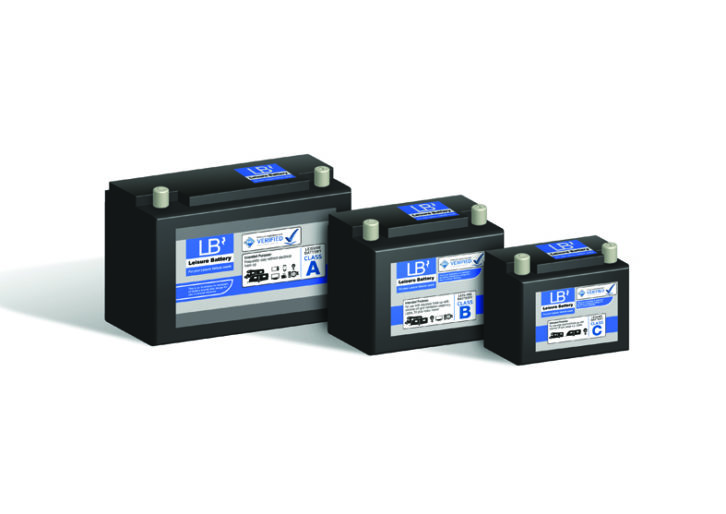
Alternatively, you could buy a battery with an NCC rating, which aims to guide caravanners towards top-quality purchases. These are rated A, B or C:
A The most highly rated and ideal for those who use a lot of electrical devices, and anybody who goes off-grid.
B Ideal for those who use electric hook-up but might also have a caravan levelling system, motor mover, or some other power-hungry device.
C For those with low electrical current needs, who always use hook-up and have few devices to draw on their battery power.
Battery safety
A well-maintained battery is very safe, but problems can occasionally arise, which is why battery boxes tend to provide external access, are sealed from the caravan interior and have vents to allow gas to escape.
A poorly kept battery can get very hot, presenting a risk of fire or explosion; build-up of gas is also a potential hazard.
If you have a motor mover, do not try to use it while the caravan is plugged into mains electricity, because this can cause irreparable damage to your van’s power supply unit.
Battery care
Properly maintained, a battery should give you years of service, never letting you down when you really need that motor mover to work – or to catch the latest Corrie cliffhanger!
Most battery problems are caused by careless owners, when they’re left flat for too long, discharged too deeply or not topped up promptly.
Cared for correctly, your leisure battery can easily last for around eight years, but to achieve that, you do need to avoid the condition known as ‘sulphating’ – the build-up of permanent sulphates on the surface of the lead plates.
Ordinarily, these lead sulphates form as the battery is discharged, but convert back to lead and lead dioxide when it’s recharged. However, if the battery isn’t recharged for an extended period of time, the sulphates can crystallise out and become permanent, seriously diminishing the efficiency of the unit.
Over-discharging is another habit that shortens the life of your leisure battery. The deeper you discharge your battery, the quicker it will die, and this deterioration can be surprisingly fast. We’ve heard of some budget batteries being damaged if they drop below 80% of their full charge.
That said, a high-quality FLA leisure battery should discharge down to 50% of its capacity several hundred times without suffering permanent damage, and for AGM and gel batteries, you can double that number.
In summary, always keep your battery regularly charged and, if accessible, keep an eye on its internal levels.
Leisure batteries can also suffer from a condition known as ‘lead shedding’, where over time, the internal plates shed particles of lead.
The thinning of the plates affects the cell’s efficiency, ad the particles can build up in the bottom of the battery, causing the plates to ‘short’ together. This can in turn create a heat build-up, and dissipate some of the cell’s energy.
Bear in mind, too, that overcharging and deep-cycling the battery can increase the rate of shedding, although because of their design, this is less of a problem in AGM and gel batteries.
FLA leisure batteries also contain glass fibre sheets, which help to minimus the effect of lead shedding.
It’s important to keep an eye on the level of charge in your battery – caravan voltmeters can give you a good idea of this, although they’re not as accurate as handheld voltmeters.
Battery charging
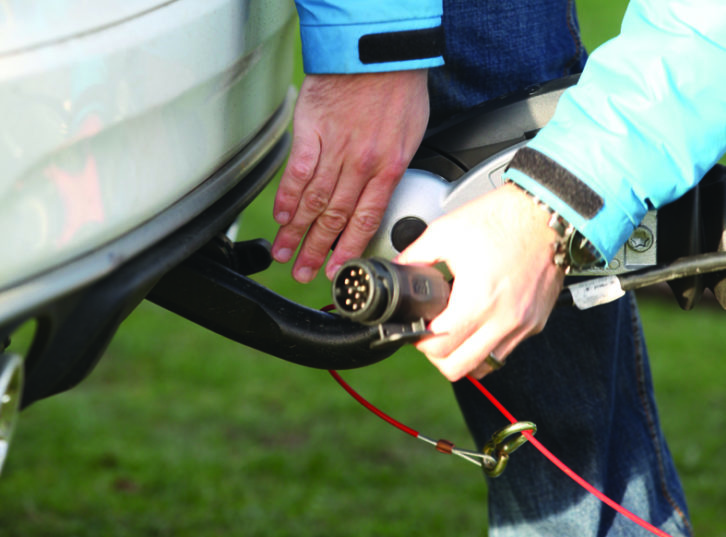
Your leisure battery will be charged while your caravan is being towed, or when you are plugged into an electric hook-up point. It can also be charged when removed from the tourer.
A typical battery needs to be charged at 14.4V to achieve a 100% charge. However, many basic caravan electrical systems only provide 13.6-13.8V, because this won’t cause problems with overcharging or gassing (when the battery is fully charged and the continuing current turns water in the electrolyte into hydrogen and oxygen).
This is where intelligent chargers come in. You can buy these for home charging, and many manufacturers now fit them in their caravans.
These devices offer staged charging, rather than a constant charge at one level. Initially, the charging is increased gradually with a lower current, to prevent damage to the battery. Then it rises to 14.4V and the battery receives its main charge.
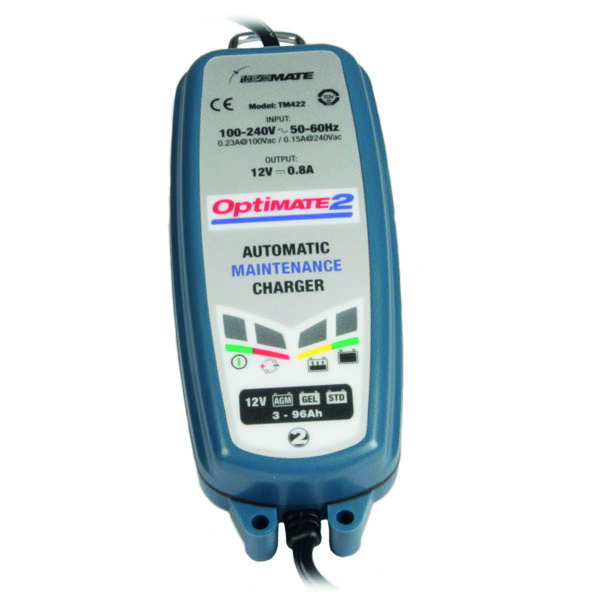
Once the battery is fully charged, the device drops the voltage to 13.6V, a trickle charge, to keep it at 100%, but with no risk of damage.
Should you turn on a tap or the TV, the charger senses the load and increases the voltage to 14.4V to keep the battery replete.
Intelligent chargers take a great deal of the effort out of day-to-day maintenance, and help you to maximise your leisure battery’s life.
If your caravan has the more basic charger (check this in your manual), we recommend removing the battery from time to time and charging it in a garage or shed, using an intelligent charger, such as those available from CTEK, Optimate and other brands.
These units can be left on indefinitely (over winter if necessary) and will help to keep your leisure battery in an ideal state of readiness.
Any battery will gradually discharge, even when it’s not being used. The rate at which its power dissipates depends on the battery type and the ambient temperature wherever you’re storing it.
With FLA batteries, the rate of discharge is around 9% per month at 25°C, while gel and AGM batteries lose 3-4%.
In cooler climes, say 10°C, the rate of dissipation can be reduced to less than half those amounts, which is good news for caravans kept in storage over the winter months.
Off-gridding
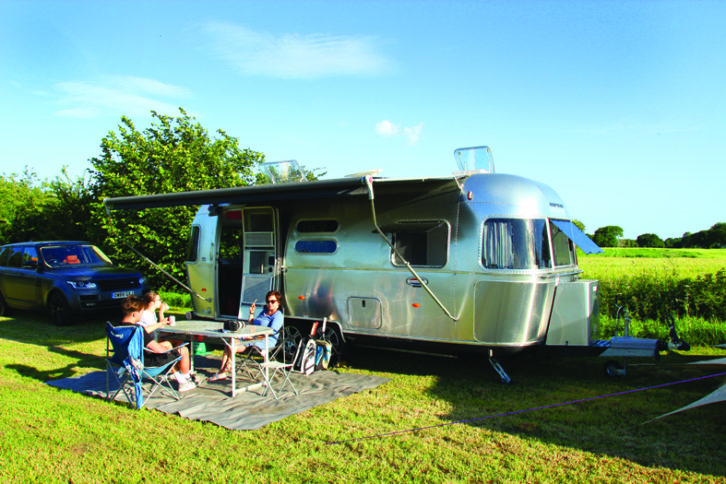
Battery power is never more crucial than when off-gridding. Away from hook-up, the charge has to be carefully conserved.
Serious off-grinders often use solar panels to maintain as high a level of charge as possible. This is fine in summer, with a 100W panel or bigger (before you got to bed, position portable panels ready for the morning sun), but in winter, it’s trickier.
It is possible to wire two (or more) leisure batteries in parallel into your system, although this is more common in motorhomes, where weight isn’t such a factor. The batteries have to be as near identical as possible for the best results.
Alternatively, devices are available that will auto-switch between batteries as required.
Charge levels
The voltage of the battery (when not under load) indicates its charged level.
This table illustrates the voltage readings you might expect to see at six levels of discharge, from full to empty. By preventing your charge dropping below 50% for an FLA battery, and 40% for an AGM or a gel battery, you should substantially prolong the life of your leisure battery. In both cases, that equates to around 12.2V on your caravan’s battery meter.
BATTERY CHARGE AND VOLTAGE READINGS
| Approx level of charge | Flooded or sealed lead-acid | AGM | Gel |
| 100% | 12.70+V | 12.80+V | 12.85+V |
| 75% | 12.40V | 12.60V | 12.65V |
| 50% | 12.20V | 12.30V | 12.35V |
| 40% | 12.10V | 12.20V | 12.20V |
| 25% | 12.00V | 12.00V | 12.00V |
| 0% | 11.80V | 11.80V | 11.80V |
If you liked this… READ THESE:
How to fit USB sockets and upgrade your TV signal amplifier
If you’ve enjoyed reading this article, why not get the latest news, reviews and features delivered direct to your door or inbox every month. Take advantage of our brilliant Practical Caravan magazine SUBSCRIBERS’ OFFER and SIGN UP TO OUR NEWSLETTER for regular weekly updates on all things caravan related.
Future Publishing Limited, the publisher of practicalcaravan.com, provides the information in this article in good faith and makes no representation as to its completeness or accuracy. Individuals carrying out the instructions do so at their own risk and must exercise their independent judgement in determining the appropriateness of the advice to their circumstances. Individuals should take appropriate safety precautions and be aware of the risk of electrocution when dealing with electrical products. To the fullest extent permitted by law, neither Future nor its employees or agents shall have any liability in connection with the use of this information. You should check that any van warranty will not be affected before proceeding with DIY projects.
Intelligent chargers take a great deal of the effort out of day-to-day maintenance, and help you to maximise your leisure battery's life.

